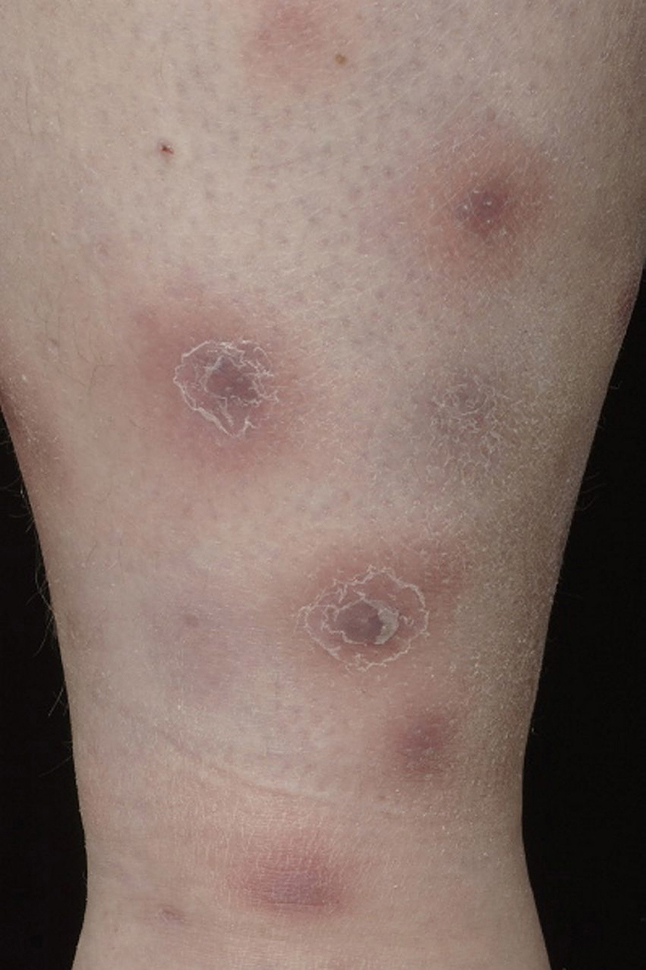-
(a) (a) What is the most likely diagnosis?
Show Answer
The most likely diagnosis is erythema nodosum. There is inflammation of the subcutaneous fat focused on the septae that divide different areas of fat (septal panniculitis). This results in an area of ill-defined swelling. As lesions settle they often leave dusky areas that gradually return to normal. Normally the lesions have a smooth surface, but in this patient the inflammation has been so intense that there is scaling over some of the lesions.
-
(b) What are the most common causes of this condition?
Show Answer
There are many causes of erythema nodosum, including tuberculosis, sarcoidosis, upper respiratory tract infection with beta-haemolytic streptococci, many other infections such as Yersinia, drugs (e.g. the oral contraceptive pill), inflammatory bowel disease and auto-immune disease. However, in about 40% cases, no cause is found.
-
(c) What investigations should be carried out?
Show Answer
The clinical diagnosis is usually clear and there is seldom need for a skin biopsy. However, extensive investigation is required to try to identify a cause that may need to be treated. Basic investigations include chest X-ray, throat swab for culture, anti-streptolysin-O titre, tuberculin test, angiotensin-converting enzyme blood level, along with an erythrocyte sedimentation rate (ESR) and full blood count. If a specific disease is suspected or identified, further investigations aimed at that disease might be required.
-
(d) How should the patient be managed?
Show Answer
Any drugs that might cause erythema nodosum should be stopped. Any underlying disease identified should be treated. For the erythema nodosum, rest with elevation of the legs or bed rest may be necessary for a few days. The skin inflammation should be treated with non-steroidal anti-inflammatory drugs or with potassium iodide.
-
(e) What is the prognosis?
Show Answer
The condition usually settles after about 4–6 weeks. If an unidentified underlying provoking condition persists, the erythema nodosum may also persist.


